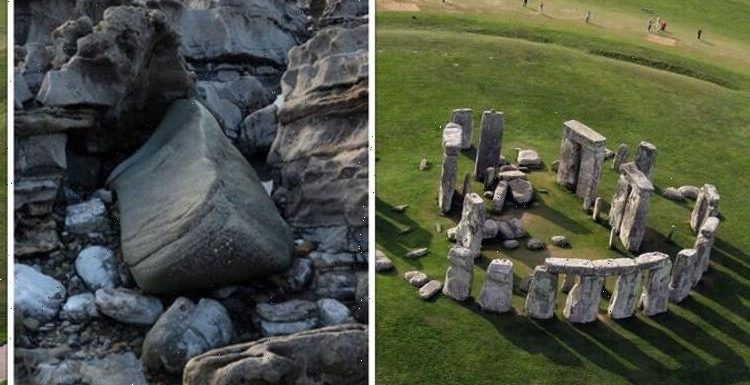
Stonehenge: 'Mind-blowing' new discoveries discussed by experts
We use your sign-up to provide content in ways you’ve consented to and to improve our understanding of you. This may include adverts from us and 3rd parties based on our understanding. You can unsubscribe at any time. More info
Dr Brian John, a glacial geomorphologist, has been collecting evidence relating to the transport of the Stonehenge bluestones for years. Earlier this year, he revealed that the “smoking gun” of Stonehenge had been found in the Mumbles, on the southern coast of Wales. A seven-tonne boulder, said to match those used on the Salisbury Plain, “proved beyond doubt” that the Irish Sea Glacier was once capable of carrying large rocks from Pembrokeshire up the Bristol Channel towards Wiltshire.
Dr John believes that the story of Stonehenge has been overcomplicated.
He told Express.co.uk: “My feeling is the monument was built there, Stonehenge, because that’s where the stones were.
“The bluestones, if you look at them, they are always shown as being lovely pillars – but they are not like that at all.
“Five or six are, but most of the others are just lumps of rock.


“They are just heavily abraded boulders and I think the builders have probably collected the sarsens and the bluestones from Salisbury Plain.
“The question is how far afield they had to go.”
His theory goes against that of Professor Mike Parker Pearson, from University College London (UCL), who last year announced a breakthrough.
His team uncovered a similar structure at Waun Mawn, in the Preseli Hills of Wales, which experts say was dismantled and used as the “building blocks” of the attraction that stands in Salisbury today.
The discovery left many questioning how the huge stones were moved by the Neolithic builders some 4,500 years ago.

Dr John believes there is a much simpler explanation.
He added: “My own theory is because there are about 40 sarsens and 40 bluestones, my theory is that Stonehenge was never finished.
“They found the stones lying around and hauled them in to build a monument that was showed a huge amount of ambition.
“But I think, eventually, they just ran out of stones. So it ended up being half-built.
“I think when they ran out the effort to find more stones became larger and larger and so they just ran out of energy and gave up on the project.”
Dr John says the story of Stonehenge has been “overcomplicated” as it became “embedded in English culture”.
DON’T MISS
NASA offering $1m to come up with ‘innovative’ solution to dilemma [REPORT]
UK scrambles to bolsters gas supplies as Russia threatens blackouts [REVEAL]
Millions of Britons face blackouts as emergency supplies triggered [INSIGHT]


He explained: “I think because of our obsession with storytelling and myth-making, we have actually lost sight that these monuments.
“I’m not saying they didn’t have a ritual or religious purpose, I think the makers were still
Capable of creating something magnificent.
“But what I’m saying is there were limits on their technical expertise and the decree in which they would hold ceremonies.
“For me, the whole idea of collecting stones from 160 miles away in North Pembrokeshire has always been completely ludicrous.”
It comes as the British Museum opens its new “World of Stonehenge” exhibition from today, until July.
It is the first-ever major exhibition about the monument and brings 430 objects from seven countries, in partnership with the State Museum of Prehistory in Halle, Germany.
The majority of the items have never been seen in the UK before.
Source: Read Full Article